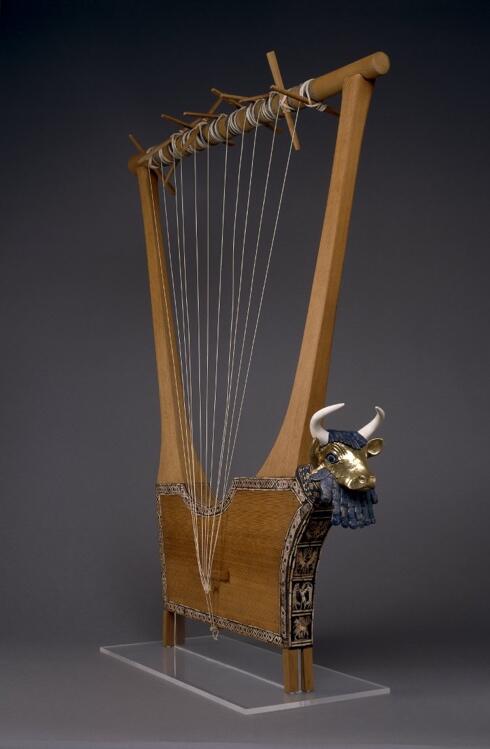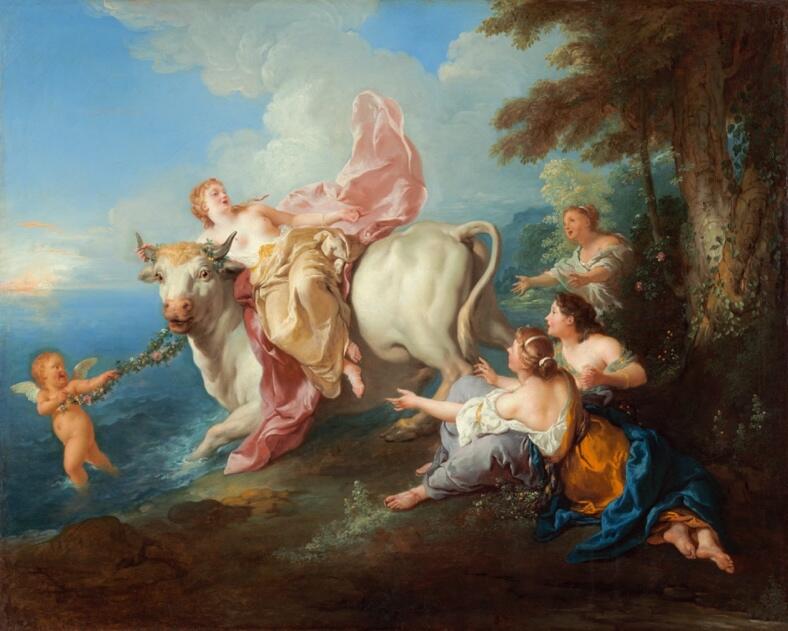The Great Lyre With the Bulles Head Art History
Print Сite this
Art and History. Bull Headed Lyre of Ur
Introduction
Interpreting different pieces of art throughout the history of humankind'south development allows connoisseurs to transfer dorsum in time and feel what artists felt when making their pieces. By using the example of the bull-headed harp with an inlaid sound box from Pu-abi tomb ("King's Grave") the present exploration will aim to trace relationships between fine art and history, as well as placing the analyzed work within cultural and chronological contexts. While some may perceive the harp as an art piece intended to transfer the beauty of craftsmanship, it is imperative non to underestimate its historical value.
We will write a
custom essay
specifically for you
for only $16.05 $xi/page
Learn More than
Main text
The bull-headed harp from the tomb of Pu-abi (Figure 1) was found in the Purple Cemetery of Ur in modern Iraq and dates back to 2600-2400 BCE (Kleiner 38). The materials used in the piece include wood, ruby-red limestone, shell, gold, and lapis lazuli (Kleiner 38). It is currently included in the exhibition at the British Museum in London. The bearded head of the bull is adorned with gilt leafage, which is normally a symbol of wealth and prosperity. The inlaid sound box has several illustrations of narrative scenes of battle. The images tell the story of war, with soldiers bringing bound captives and carrying provisions, with the battles being celebrated by a king during a feast. Showing the victory of Sumerian rules and elevating their force is a universal narrative tool for giving respects to those who have led the commonwealth toward prosperity. While scholars take suggested that the scenes on the audio box do not have any clear meaning, they should be seen equally methods for artists to draw social interactions of thousands of centuries ago.

The bull head also plays a significant role in not only the composition but as well the pregnant of the piece. Bulls are animals with totem symbolism, representing the image of masculinity and superiority in the animal kingdom. Thus, the bull head adorned with gold leaf symbolizes the strength, wealth, and ability of the king in whose tomb the harp was found. The examples of balderdash imagery can be found in the art of ancient Hellenic republic, Rome, and Arab republic of egypt, and even in later periods (McIver 10). For case, Jean François de Troy's painting The Abduction of Europa (oil on canvas, 1716) is a reference to Greek mythology and shows a balderdash carrying a woman away. The scene is from Ovid's Metamorphoses story, in which Jupiter transformed into a bull to lure Europa and accept her to Crete, where she would give him three sons ("The Abduction of Europa"). Over again, the bull represents masculinity and power, which is a theme that can also be traced in the assay of the harp.

Conclusion
In summary, information technology should exist mentioned that symbolism transcends history and can be traced in multiple cultures and geographical areas. The analysis of the bull-headed lyre pointed to the importance of masculine imagery in elevating the forcefulness of civilizations and cultures. The comparison and contrasting of examples of art that included the imagery of bulls showed that in both cases, artists used the animal to illustrate the masculinity trope and its role in shaping the historical narrative. While such an approach can be seen equally misogynistic, its significance within the historical development should not be underestimated.
Works Cited
Kleiner, Fred. Gardner's Fine art through the Ages: The Western Perspective. Volume 1. Cengage Learning, 2017.
"Lyre." The British Museum.
McIver, Gillian. Art History for Filmmakers: The Art of Visual Storytelling. Fairchild Books, 2016.
Get your
100% original paper
on any topic
done in equally footling as
3 hours
Larn More
"The Abduction of Europa." National Gallery of Art.
Source: https://studycorgi.com/art-and-history-bull-headed-lyre-of-ur/
0 Response to "The Great Lyre With the Bulles Head Art History"
Publicar un comentario